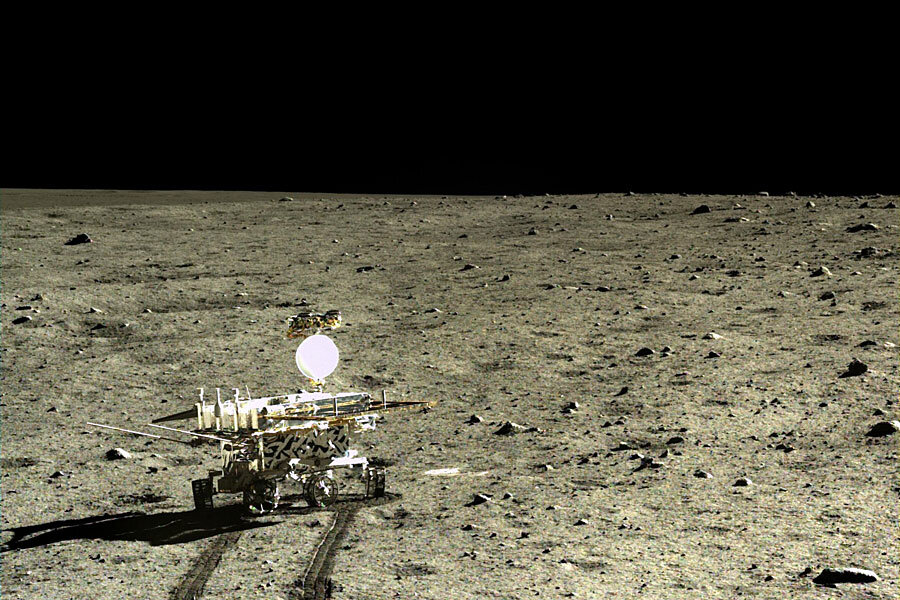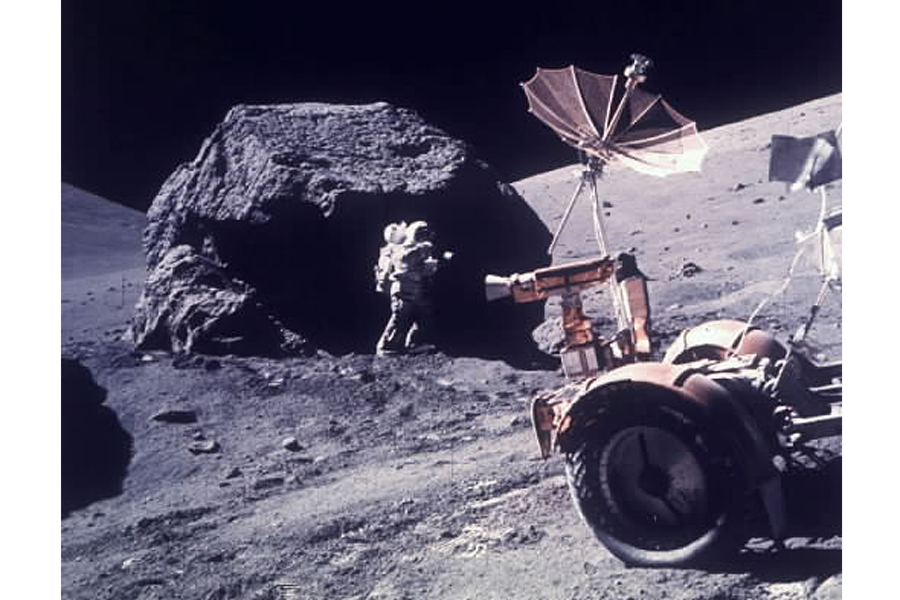China's 'Jade Rabbit' rover finds curious substance on moon
Loading...
There's a new moon rock in town, and it's volcanic.
An unmanned Chinese rover found a new type of basalt on the surface of the moon, according to a new paper published Tuesday in the journal Nature Communications.
"We recognize a new type of lunar basalt with a distinctive mineral assemblage compared with the samples from Apollo and Luna, and the lunar meteorites," the scientists write.
Some 40 years ago, those US and Russian missions also found basalt on the surface of the moon. But China's rover, dubbed Chang’e-3 Yutu or Jade Rabbit, determined that these newfound rocks have a different mineral composition.
These new moon rocks were found as the rover examined the impact crater in the Mare Imbrium on the moon. That region is particularly geologically young, having formed around 2.96 billion years ago.
Learning more about the moons' rocky composition could help scientists better understand the evolution Earth's natural satellite. "The chemical and mineralogical information of the CE-3 landing site provides new ground truth for some of the youngest volcanism on the Moon," the authors write.
How the moon came to be has long been a mystery. But scientists have a few ideas.
Perhaps the moon formed from debris from a collision of two protoplanets, as a leading explanation suggests. In that scenario, known as the Giant Impact Hypothesis, one of those planetary bodies was the Earth in its early formation. The other was Theia, a Mars-sized body.
Understanding the composition of the moon could help scientists determine what happened. If scientists can determine what material glommed together to form the moon, they might be able to figure out where that debris came from in the first place.
Because volcanic activity carries minerals from the center of a planetary body to the surface, understanding the moon's volcanic rocks could be key to determining lunar composition.
The basalts found by the Yutu rover have a different mineral composition from those spotted during missions to the moon four decades ago. And just that difference could say a lot.
"The diversity tells us that the Moon’s upper mantle is much less uniform in composition than Earth’s. And correlating chemistry with age, we can see how the moon’s volcanism changed over time," one of the study authors, Bradley Joliff of the Washington University of St Louis, told The Guardian.
Because minerals crystallize at different temperatures as volcanic rock cools, these rocks of different compositions could say something about what happened deep inside the moon.









